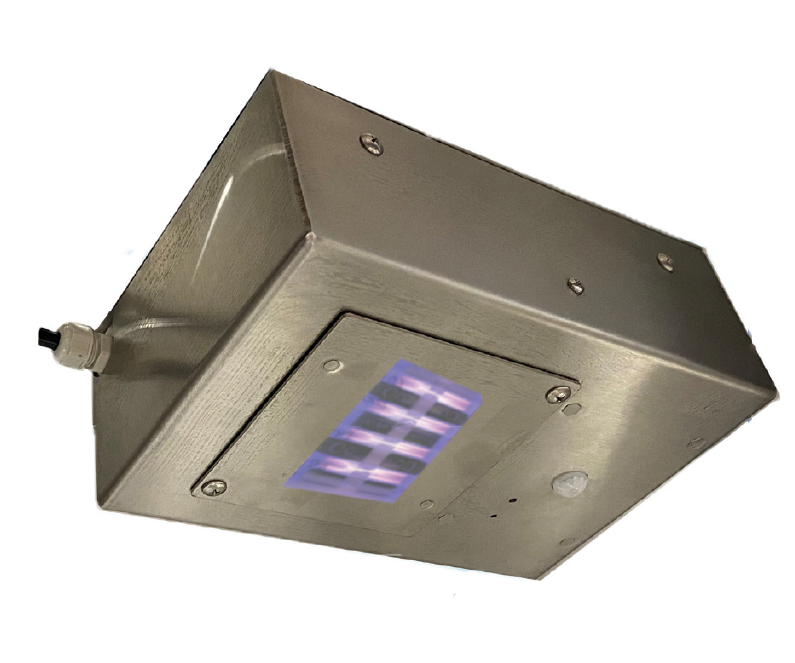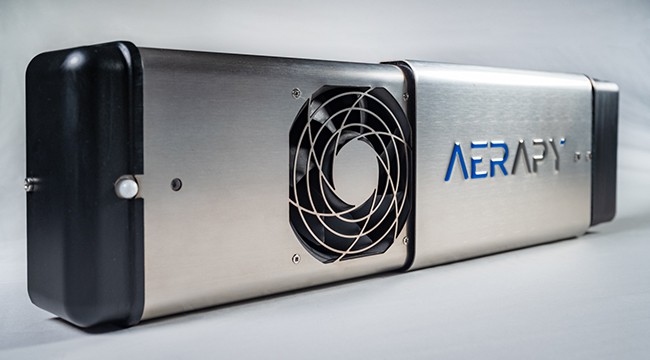Harnessing the Possible of UV Sanitation: Shielding Health and Hygiene
UV sanitation, a modern technology widely utilized in various industries, has actually proven efficient in getting rid of dangerous virus. From understanding the systems at play to applying this technology in our daily lives, this discussion intends to shed light on the possibility of UV sanitation and its role in securing our wellness and hygiene.
Comprehending UV Disinfection
UV sanitation is a highly reliable and extensively utilized method for getting rid of damaging pathogens and making certain health and wellness and health. This method makes use of ultraviolet (UV) light to inactivate microbes by damaging their DNA and preventing them from replicating. UV sanitation is specifically reliable versus bacteria, viruses, and various other microorganisms that can create illness and infections.
The principle behind UV disinfection is easy yet powerful. When UV light is produced at a specific wavelength, it permeates the microorganism's cell wall and interrupts its hereditary product. This process, referred to as photodissociation, leads to the formation of thymine dimers, which prevent the bacterium from replicating and making it safe. UV disinfection can be applied in different settings, consisting of water treatment plants, medical care facilities, food processing industries, and air purification systems.
One of the benefits of UV disinfection is its capacity to effectively and successfully remove a wide variety of virus without the demand for chemicals or additives. Unlike other disinfection techniques, such as chlorine or ozone, UV disinfection does not introduce unsafe byproducts or chemical residues right into the setting. In addition, UV sanitation is a non-contact procedure, which indicates that it does not require physical contact with the microbes, decreasing the danger of cross-contamination.

The Science Behind UV Disinfection
The efficiency of UV disinfection hinges on its ability to disrupt the genetic material of microbes, making them incapable to replicate and thus eliminating their harmful possibility. UV, or ultraviolet, radiation is a kind of electro-magnetic radiation with wavelengths shorter than visible light. It is categorized right into three types: UV-A, UV-B, and UV-C. UV-C radiation, specifically, has the fastest wavelength and the greatest energy. This high-energy UV-C radiation is most efficient in sanitation applications due to the fact that it can penetrate the cell walls of microorganisms and harm their DNA or RNA.
When microbes are exposed to UV-C radiation, the power is soaked up by their hereditary product, triggering bonds to damage and forming chemical reactions that interrupt their capacity to replicate. This stops the bacteria from replicating and spreading out infection. UV sanitation is especially efficient versus fungis, viruses, and microorganisms, consisting of usual microorganisms such as Escherichia coli, Salmonella, and Influenza.
The science behind UV disinfection is supported by considerable research study and studies. It has been shown that exposure to an adequate dosage of UV-C radiation can attain a high degree of disinfection, often going beyond 99.9% efficacy in eliminating microorganisms. It is essential to keep in mind that the effectiveness of UV sanitation depends on numerous factors, consisting of the strength of UV-C radiation, direct exposure time, distance from the UV source, and the vulnerability of the microbe to UV radiation (uv surface disinfection).
Applications of UV Disinfection
Provided the extensive research and effectiveness of UV disinfection in interfering with the hereditary product of microorganisms, it is vital to discover the different useful applications of this innovation. UV disinfection has actually shown to be a useful tool in a wide variety of markets where keeping a tidy and secure atmosphere is necessary.
One significant application of UV disinfection is in health care settings. UV light can be used to decontaminate surfaces, tools, and also the air in hospitals and clinical facilities. This helps to reduce the risk of healthcare-associated infections and makes sure a more secure atmosphere for individuals and healthcare workers.
Another vital application is in the food and beverage sector. UV sanitation is made use of to deal with water and get rid of damaging virus, try this website such as E. coli and Salmonella, from the production process. uv surface disinfection. This makes sure the safety and security and top quality of the items we eat
UV sanitation is also extensively utilized in water therapy plants and wastewater therapy facilities. It is an effective method for ruining damaging bacteria, infections, and parasites that can be existing in water sources. This assists to give secure and clean drinking water to communities and safeguard the setting from pollution.
Furthermore, UV sanitation is utilized in the pharmaceutical market to sterilize equipment and preserve the stability of items. It is also made use of in laboratories and research study centers to protect against contamination and ensure precise outcomes.
Benefits of UV Sanitation Technology
One noteworthy benefit of using UV sanitation modern technology is its ability to properly eliminate microorganisms without making use of rough chemicals. This is specifically advantageous in different settings, such as health care centers, water therapy plants, and food processing markets, where the existence of harmful virus positions a significant danger to public health and wellness and safety and security.
Unlike traditional sanitation methods that rely on chemicals like chlorine or ozone, UV disinfection modern technology uses ultraviolet light to target and damage the DNA of microbes, properly counteracting their capacity to recreate and trigger infections. This process not only removes the demand for potentially harmful chemicals but additionally minimizes the danger of chemical residue or by-products remaining in the cured atmosphere.

Additionally, UV sanitation technology is ecologically pleasant. As it does not rely upon making use of chemicals, it removes the requirement for their disposal, transportation, and production, minimizing the overall carbon impact linked with sanitation procedures. Additionally, UV disinfection systems have a longer life expectancy compared to chemical-based techniques, causing less regular replacement and further reducing waste.
Executing UV Sanitation in Life
To successfully execute UV disinfection in day-to-day live, people and organizations can incorporate portable UV sanitizing tools into their hygiene regimens and cleaning practices. These devices are made to release ultraviolet light, which has actually been proven to see page kill or inactivate a large array of microorganisms, including germs, fungi, and infections. By making use of portable UV sanitizing devices, individuals can decontaminate frequently touched surface areas and objects, such as cellular phone, doorknobs, tricks, and laptop computers, lowering the risk of spreading bacteria and infections.
Along with integrating mobile UV sanitizing tools, it is very important to adhere to appropriate guidelines and referrals for efficient UV disinfection. This includes making certain that the device is made use of correctly and for the advised duration to check my blog attain ideal disinfection outcomes. It is likewise crucial to focus on safety and security procedures, such as putting on protective eyewear and preventing direct exposure of the UV light to the skin.

Moreover, organizations can execute UV sanitation innovation in numerous setups to boost health practices. For circumstances, healthcare facilities and medical care centers can make use of UV disinfection robotics to disinfect person spaces, running movie theaters, and various other high-touch locations. Food processing sectors can integrate UV disinfection systems right into their manufacturing lines to improve food safety and avoid contamination.
Conclusion
To conclude, UV sanitation innovation holds great potential in protecting wellness and health. By utilizing the power of ultraviolet light, it properly removes damaging bacteria and lowers the risk of infections. This modern technology can be used in different settings, such as health centers, water treatment centers, and public areas, offering a safe and effective approach of disinfection. With its various benefits, UV sanitation is a beneficial tool for maintaining a tidy and healthy and balanced environment.
Unlike other disinfection techniques, such as chlorine or ozone, UV disinfection does not introduce hazardous by-products or chemical residues right into the atmosphere. It is vital to note that the performance of UV sanitation depends on different factors, including the intensity of UV-C radiation, direct exposure time, distance from the UV source, and the vulnerability of the microbe to UV radiation.
One more advantage of UV sanitation innovation is its capacity to provide continuous and quick disinfection. Unlike handbook cleaning methods, which can be taxing and call for considerable labor, UV sanitation systems can be automated and run constantly, ensuring regular disinfection without human treatment.To properly execute UV sanitation in everyday life, organizations and individuals can include mobile UV sterilizing gadgets right into their health routines and cleansing techniques.